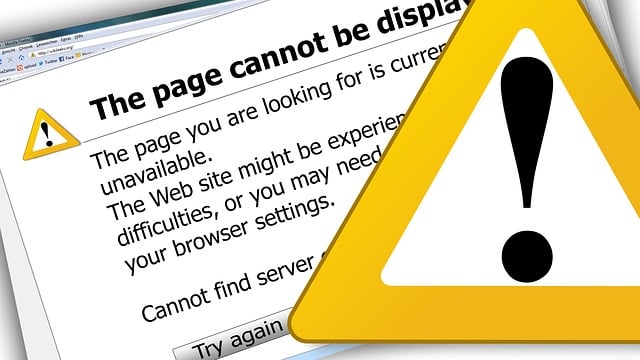Purchase Order (PO) financing, while beneficial for cash flow management, carries risks if not handled carefully. Common errors like incorrect record-keeping, inaccurate data entry, and poor communication can lead to financial losses, legal issues, and supplier relationship damage. Businesses should implement robust internal controls, regular audits, meticulous records, real-time PO tracking, clear protocols, consistent supplier communication, and automated systems to prevent PO financing errors. Early identification of discrepancies, pricing variances, non-compliance, and delayed deliveries is crucial for maintaining financial health, smooth operations, and preserving supplier relationships. Staying vigilant and adopting best practices minimize PO financing errors in today's competitive market.
In today’s fast-paced business landscape, efficient purchase order (PO) financing is crucial for cash flow management. However, recognizing and rectifying PO financing errors can be a challenge. This article delves into the common pitfalls of PO financing, providing insights on identifying key indicators of potential errors. We explore the significant impact of these mistakes on businesses and offer practical strategies to prevent and detect them. Additionally, real-world case studies highlight the consequences of PO mismanagement, while best practices guide streamlining PO financing processes, ensuring a robust and error-free system.
- Understanding PO Financing and Its Common Pitfalls
- Key Indicators of Potential Purchase Order Errors
- The Impact of PO Financing Mistakes on Businesses
- Strategies to Prevent and Detect PO Financing Errors
- Case Studies: Real-World Examples of PO Mismanagement
- Best Practices for Streamlining PO Financing Processes
Understanding PO Financing and Its Common Pitfalls

Purchase order (PO) financing is a critical process that enables businesses to manage their cash flow by extending credit to suppliers, allowing them to purchase goods or services before payment is due. While it offers numerous benefits for both buyers and sellers, it’s not without its potential pitfalls. Common PO financing errors can lead to significant financial losses, legal issues, and strained supplier relationships.
One of the primary challenges lies in accurate record-keeping and documentation. Inaccurate or incomplete PO data, such as missing terms, incorrect pricing, or mismatched quantities, can result in disputes and delays in payment. Additionally, not understanding supplier financing options, misinterpreting contract terms, or failing to negotiate favorable conditions can put businesses at a disadvantage. Timely communication is also vital; late or unclear instructions regarding approvals, modifications, or cancellations can create confusion and lead to errors in processing POs.
Key Indicators of Potential Purchase Order Errors

Recognizing potential errors in purchase order (PO) financing is crucial for businesses to avoid costly mistakes and maintain financial health. Key indicators include discrepancies between the PO and related invoices, delays in receiving goods or services despite payment confirmation, and unexpected charges or fees not outlined in the original agreement.
Additional red flags may manifest as significant variances in pricing from one vendor to another for similar products or services, or when vendors fail to comply with specified delivery terms. Regularly reviewing POs, cross-referencing them against invoices, and verifying received goods against ordered quantities are essential practices to identify PO financing errors early on.
The Impact of PO Financing Mistakes on Businesses

PO financing errors can significantly impact businesses, leading to a cascade of negative consequences. When a company issues a purchase order (PO) with incorrect terms or information, it may result in delayed payments from clients, causing cash flow problems and potentially damaging supplier relationships. This can hinder the business’s ability to meet its financial obligations and maintain operational stability. Moreover, errors in PO financing can lead to increased administrative costs as businesses have to rectify mistakes, re-issue POs, and manage the fallout with suppliers and customers.
These mistakes can also affect a company’s reputation, especially if they result in supply chain disruptions or failed transactions. In today’s competitive market, maintaining trust and reliability is crucial for long-term success. Therefore, recognizing and rectifying PO financing errors promptly is essential to ensure smooth business operations, maintain financial health, and uphold a positive image among stakeholders.
Strategies to Prevent and Detect PO Financing Errors

To prevent and detect PO (Purchase Order) financing errors, businesses should implement robust internal controls and regular audits. One key strategy is to maintain meticulous records and ensure all PO-related data is accurately captured and updated in real-time. This includes verifying supplier information, product specifications, delivery dates, and pricing. Regular reconciliation of PO documents with financial systems can help identify discrepancies early on.
Additionally, utilizing advanced technology solutions like digital PO management platforms can streamline the process, reduce manual errors, and enhance visibility. These platforms often incorporate features for automated data validation, real-time tracking, and alert systems that notify relevant stakeholders of potential issues. Training employees on best practices and conducting periodic workshops to update knowledge on PO financing trends and common errors is also essential in maintaining a robust error prevention mechanism.
Case Studies: Real-World Examples of PO Mismanagement

In the fast-paced world of business, purchase order (PO) mismanagement can lead to significant financial losses and operational disruptions. Case studies from real-world scenarios highlight the diverse nature of PO financing errors. For instance, a manufacturing company might issue POs for raw materials with inflated prices due to a lack of thorough market research, resulting in higher production costs. Conversely, a retail business could face supplier disputes when POs are not properly documented or when there’s a discrepancy between the agreed-upon terms and the actual delivery.
Another common pitfall is delayed payment processing, where businesses fail to adhere to agreed-upon payment schedules, causing strain on supplier relationships and potentially triggering financial penalties. These examples underscore the importance of meticulous PO management, from initial issuance to final settlement, to mitigate risks and ensure smooth business operations. Staying vigilant and implementing robust internal controls are key to avoiding costly PO financing errors.
Best Practices for Streamlining PO Financing Processes

To streamline PO (Purchase Order) financing processes and minimize errors, businesses should adopt several best practices. Firstly, implement a robust and centralized PO management system that provides real-time visibility into order status, payments, and supplier details. This digital approach enhances accuracy and efficiency compared to manual tracking methods. Secondly, establish clear internal protocols for PO approval workflows, ensuring only authorized personnel can approve or reject orders. Standardizing this process reduces the risk of errors due to misinterpretation or oversight.
Additionally, regularly review and update supplier terms and conditions to reflect current market practices and business needs. Consistent communication with suppliers regarding payment terms, deadlines, and any changes is vital to avoid misunderstandings and delays. Utilizing automated invoicing and payment systems can significantly reduce manual intervention, thereby minimizing the potential for human errors in PO financing processes.






